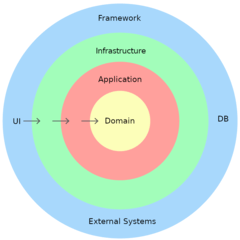One-On-One meetings in software development
One-on-one meetings serve as an essential communication tool between engineering managers and their team members. Unlike group meetings, these personalized sessions allow for deeper, more focused conversations about performance, goals, and challenges. As a result, they play a key role in nurturing employee growth, increasing productivity, and maintaining team morale. In the high-pressure environment of software development, regular one-on-ones can provide much-needed guidance, reduce conflicts, and ensure that the team remains aligned with company objectives.
What are One-On-One meetings?
A one-on-one meeting in the context of software development is a regularly scheduled, private conversation between an engineering manager and a direct report. The purpose of this meeting is to create a space for open dialogue, where both parties can discuss a wide range of topics, including performance, goals, upskilling opportunities, and challenges the employee may be facing. It's also a chance for managers to ensure that their team's work is aligned with broader company objectives.
These meetings are more than a formality; they serve as an essential tool for building trust, providing personalized feedback, and addressing concerns in a confidential setting. Unlike group meetings, one-on-one sessions allow for more focused and meaningful discussions, ensuring that every team member's voice is heard and their specific needs are met.
Purpose and atmosphere
To be effective, one-on-one meetings should foster transparency and trust. It’s important that the employee feels comfortable discussing their true concerns, challenges, and aspirations without fear of judgment. When the right atmosphere is created, managers can encourage employees to share their true thoughts and feelings, ultimately leading to more productive conversations.
Key benefits of One-On-One meetings
One-on-one meetings offer a number of important benefits, from improving communication to boosting employee satisfaction. These meetings provide an opportunity for managers to check in with their team members on an individual level, which can lead to significant improvements in overall team performance.
Improved communication
One-on-one meetings provide a dedicated space for open, honest communication. In many cases, employees may hesitate to share their concerns or feedback in larger team settings. A one-on-one conversation allows managers and employees to discuss sensitive topics without distractions or time constraints. These meetings also offer an opportunity to practice better communication skills, whether it’s about expressing concerns or delivering feedback more effectively.
Frequent one-on-one meetings facilitate honest, open dialogue between employees and managers. This type of communication ensures that issues are identified and resolved early, preventing small problems from becoming larger setbacks.
Increased productivity
By holding regular one-on-one meetings, managers can better understand each team member’s strengths, weaknesses, and areas for improvement. This knowledge allows for more effective task delegation, ensuring that employees are working on tasks that play to their strengths. When employees feel they are making meaningful contributions, their motivation and engagement levels naturally rise, leading to increased productivity.
Additionally, these meetings can help managers identify roadblocks or challenges that may be preventing employees from performing at their best. Addressing these issues quickly and efficiently helps to keep projects on track and reduces the likelihood of delays caused by unaddressed concerns.
Enhanced employee engagement
When employees feel heard and supported, their engagement levels naturally rise. By taking the time to listen to employees’ concerns, offer support, and help them set achievable goals, managers can build a foundation of trust and loyalty. Regular one-on-one meetings signal to team members that their well-being and growth are a priority, boosting both morale and long-term retention.
Furthermore, one-on-one meetings offer an opportunity for employees to provide feedback on their own experiences within the company. When managers take action based on this feedback, employees feel heard and respected, further strengthening their connection to the organization.
Development opportunities
One of the most valuable aspects of one-on-one meetings is their potential to identify opportunities for employee growth and development. These conversations allow managers to explore their employees' long-term career goals, helping them identify areas where additional training or support may be needed. This not only helps employees grow professionally but also contributes to the overall success of the company by ensuring that team members are continually improving their skills.
By discussing development opportunities during these meetings, managers can help employees create personalized growth plans that align with both their career aspirations and the company’s needs. This investment in professional development also sends a clear message to employees that their growth and success are valued.
Conflict resolution
Another key benefit of one-on-one meetings is their ability to help resolve conflicts and mitigate potential risks. When employees feel comfortable discussing concerns or challenges in a private setting, they are more likely to bring up issues before they escalate. Managers can then work collaboratively with employees to find solutions, prevent conflicts from affecting team dynamics, and maintain a positive work environment.
Why One-On-One meetings are vital in software development?
The software industry is known for its fast pace and high demands, and engineers can easily become overwhelmed without proper support. One-on-one meetings help managers gauge how their team members are coping, identify any burnout risk, and provide the necessary resources or guidance to keep employees engaged and motivated. These meetings serve as a touchpoint to ensure engineers are not only performing well technically but also feeling supported and valued.
Mental and emotional support
Software engineers frequently face tight deadlines and challenging problems, which can lead to burnout if not properly managed. One-on-one meetings give managers the opportunity to check in on how their employees are coping, offering support and resources where necessary.
Technical guidance and alignment
In addition to personal support, these meetings allow managers to ensure that their engineers' work is aligned with broader team and company goals. By providing timely feedback and technical guidance, managers can help employees stay on track and make meaningful contributions.
Preparing for a productive One-On-One meeting
A successful one-on-one meeting requires thoughtful preparation. Both managers and employees should come into the conversation with a clear understanding of what they hope to achieve. Preparing ahead ensures that these meetings are focused, efficient, and productive.
Adopt the right mindset
To get the most out of one-on-one meetings, both managers and employees need to approach them with the right mindset. These meetings should be seen as opportunities for collaboration and growth, rather than just formal evaluations. As a manager, it’s essential to listen actively and create a space where your direct report feels heard and respected. Employees should feel encouraged to speak openly about their challenges and aspirations.
Review past conversations
Before each meeting, take some time to review notes or action items from previous sessions. This will allow you to follow up on progress, revisit any unresolved issues, and ensure continuity in your discussions. By tracking goals and action items from previous meetings, you can maintain a sense of accountability and show that you value your employee’s progress.
Set an agenda
One of the most effective ways to ensure that your one-on-one meetings are productive is to prepare an agenda in advance. Topics can include project updates, performance feedback, career development, and any specific challenges or concerns the employee may have. Sharing this agenda with the employee ahead of time allows them to prepare their thoughts and questions, leading to a more focused and efficient conversation.
Be flexible
While having an agenda is important, it’s equally important to remain flexible during the meeting. Employees may bring up unexpected topics or concerns, and being open to addressing these issues can lead to more productive and meaningful conversations. Flexibility allows managers to adapt to the needs of their direct reports and provide timely support when necessary.
Key areas to focus on during One-On-One meetings
While each one-on-one meeting may cover a variety of topics, there are some key areas that should be revisited regularly to ensure meaningful progress. Focusing on these core areas helps both managers and employees stay aligned on priorities and personal development.
Project updates and challenges
One of the primary functions of a one-on-one meeting is to discuss the employee’s current projects and any challenges they may be facing. This provides managers with a chance to offer guidance, remove obstacles, and ensure that the employee’s work is contributing to team goals.
Career development and goals
One-on-one meetings are also an ideal time to discuss long-term career goals and development opportunities. Managers should take the time to understand their employee’s aspirations and help them set realistic, achievable goals that align with both personal and organizational objectives.
Feedback and performance
Providing constructive feedback is another key component of one-on-one meetings. However, it’s important to ensure that feedback is specific and actionable, rather than vague or overly critical. When offering feedback, focus on both the positive and the areas for improvement, and provide examples to illustrate your points. This helps employees understand where they stand and how they can continue to grow.
Employee well-being
In today’s remote or hybrid work environments, checking in on employee well-being is more important than ever. One-on-one meetings provide an opportunity to ask employees how they’re feeling, whether they’re facing burnout, and what steps can be taken to improve their work-life balance. Showing genuine concern for your employees’ mental and emotional health fosters a positive work culture and helps reduce turnover.
Conclusion
One-on-one meetings are an invaluable tool for engineering managers looking to build stronger, more productive relationships with their team members. By providing a space for open dialogue, personalized feedback, and ongoing development, these meetings help create a supportive environment where employees feel valued and empowered to grow. When handled correctly, one-on-one meetings can strengthen relationships, improve employee engagement, and ensure long-term success for both individuals and the organization.




0 Comments